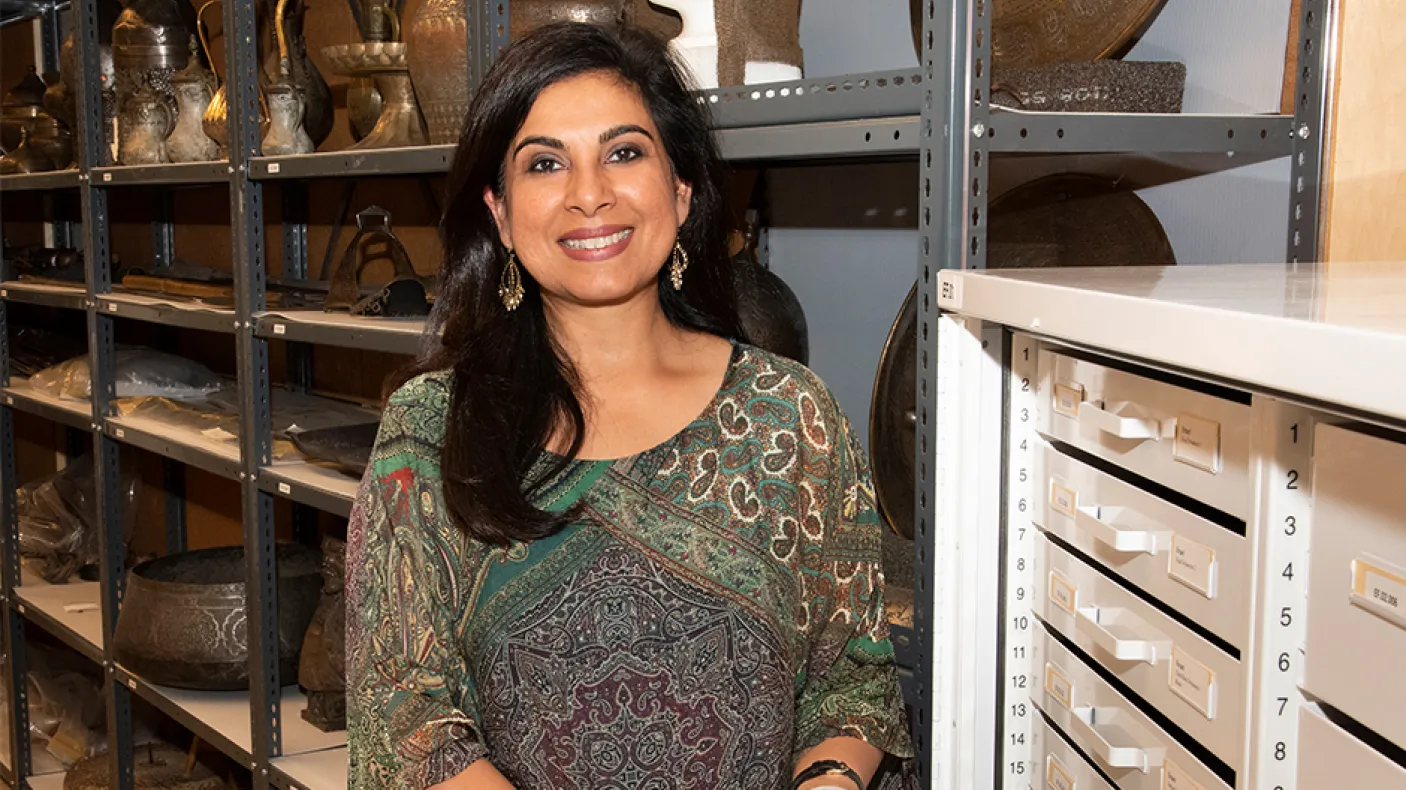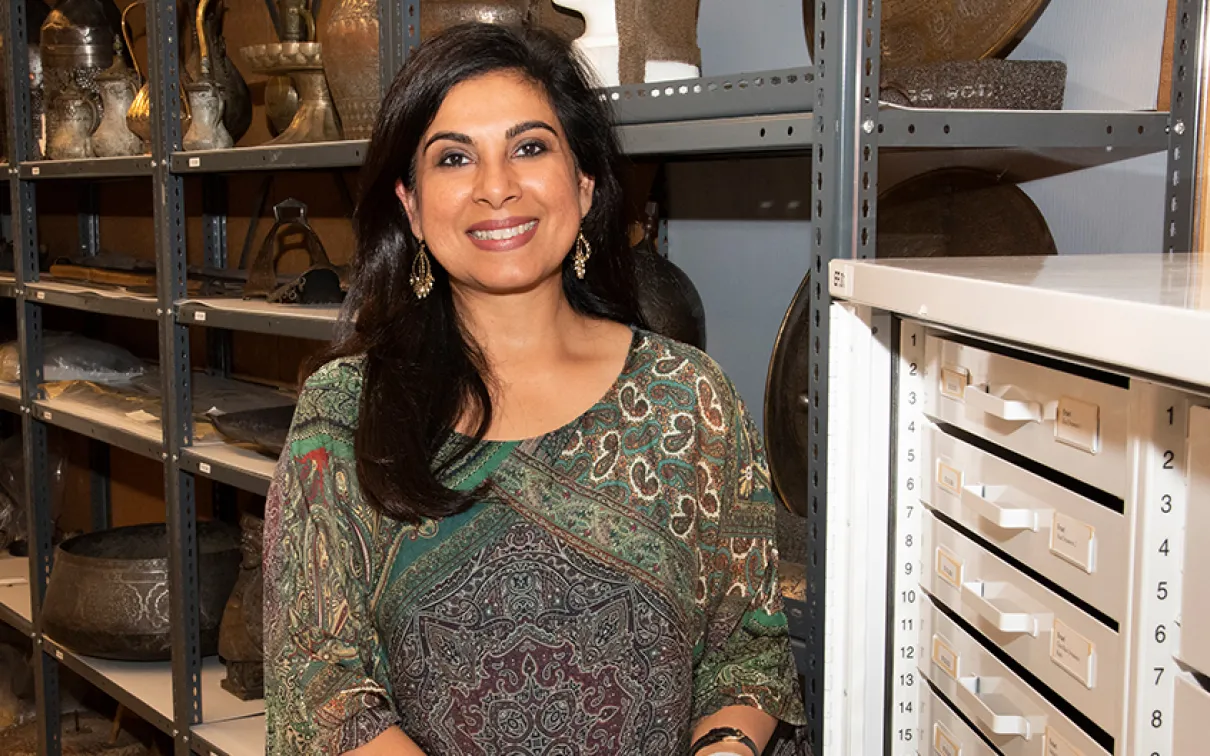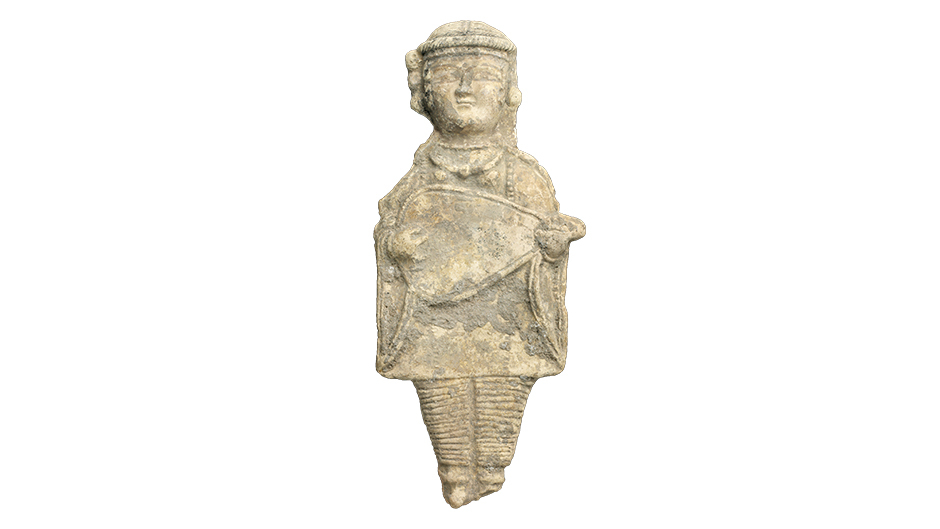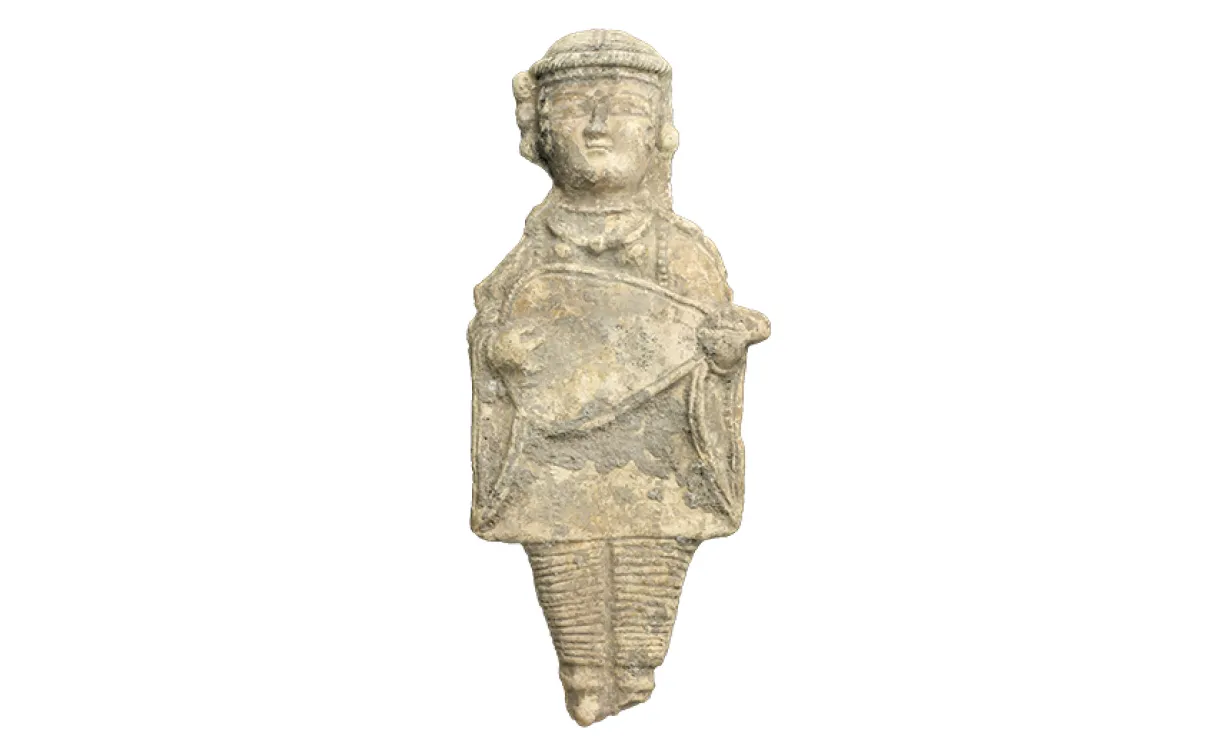Beliefs, Ambitions, Achievements, and Experiences
Curator Fahmida Suleman discusses the significance of the ROM’s Islamic Arts collection.
Published
Category
Author
After a 10-year stint at the British Museum
After a 10-year stint at the British Museum, Fahmida Suleman is back home in Toronto as the ROM’s new Curator of Islamic Art & Culture. Here, she shares with ROM magazine her plans and some of her favourite objects in the collection.
Welcome! What made you come back to Toronto, and to the ROM in particular?
Thank you, it’s great to be back! I have been away from Toronto for a total of 24 years, so this was an exciting homecoming for me and my family. As an undergraduate in Islamic and religious studies at the University of Toronto’s downtown campus in the early ’90s, I took courses with inspirational curators at the ROM and dreamed of working here one day. I moved to the UK as a graduate student in Islamic studies and later focused my PhD research in Islamic art and archaeology at Oxford University. But the best education I received was from my travels to different countries and through the friendships I made with people from around the globe. For the past 10 years, I held an endowed position as Phyllis Bishop Curator for the Modern Middle East at the British Museum where I played a pivotal role in the planning, development and installation of the new Albukhary Foundation Gallery of the Islamic World. Here at the ROM, I have big ambitions for the collections, permanent display, and exhibitions and cannot wait to share them with audiences.
I also knew that the ROM has a thriving culture of philanthropy and I genuinely enjoy connecting with volunteers, donors, patrons, community groups, and policy makers. At the British Museum, I worked with a range of organizations from homeless shelters to the British army, discussing the richness and complexity of the Islamic world through the lense of museum objects. More than ever, museums have a major role to play today. Objects are the perfect starting point to foster open discussions and ask difficult questions, and museums are spaces where we can create social bonds in our diverse societies. In my mind, a healthy civil society is one in which art and culture is integrated within political and social discourse and the arts can contribute to social equality, sustainable living, and global pluralism. This is why I am working closely with the ROM Governors to permanently endow the Curatorship of Islamic Art & Culture, so that we can provide even more exciting opportunities to build bridges and encourage dialogue at a particularly important time in our country’s—and indeed our world’s—history.
What can the ROM’s Islamic objects tell us about cultural heritage, past and present?
The ROM stewards Canada’s largest collection of over 10,000 objects, textiles and archaeological finds from across the Islamic world, reflecting the artistic and technical achievements of diverse cultures and civilizations spanning the 7th to the 21st centuries. Not only are many of these objects and artifacts aesthetically engaging, they also tell us compelling stories about people’s beliefs, ambitions, achievements, and experiences over the course of 1,400 years following the birth of Islam in 610 CE. I have also begun to expand the historic collections by acquiring modern and contemporary works of art in order to tell more recent, and sometimes politically charged, narratives that reflect the lives of individuals, communities, and entire nations in today’s world.
How can collections such as these help us build bridges between cultures?
The ROM is a public space that fosters dialogue and engagement among people of all backgrounds and beliefs, and I think these objects speak to our common human experiences and concerns and not only our differences. The term Islamic art is misunderstood if interpreted purely as religious art for Muslims. The ROM’s Islamic collections not only highlight the diversity of Muslim peoples across the world and through the ages, they also represent the material culture of Jewish, Christian, Zoroastrian, Hindu, and other faith traditions in geographic regions where Islam was the state religion. For example, I would love to curate a show about food culture across the Islamic world and through the ages. A topic like that could address everything from medieval cookbooks and rituals of hospitality, to the spread of coffee culture, or food memories of newcomers to Canada. The public program would also allow us to engage with diverse communities across the Greater Toronto Area and bring in new audiences to the Museum.
Do you have any favourites in the collection?
Do you have any favourites in the collection?
I have many favourites in the Islamic collections, some of which are currently on view in the Wirth Gallery of the Middle East, while others are hidden treasures in our storerooms, waiting to be researched and exhibited. For example, I love the unglazed ceramic figurine of a female musician on show in the gallery. Made in medieval Iran, she looks like she’s about to play her lute and it reminds me of the importance of music and poetry in the arts of the Islamic world and that I should find a way to introduce music and song in the gallery for our visitors. Hidden treasures in the Islamic holdings include a large collection of silver jewellery made by semi-nomadic Turkmen people of Iran and Central Asia. Dating from the late–19th and early–20th centuries, each piece is expertly crafted and many have gilded decoration and are inlaid with carnelians. Usually made for bridal dowries, the jewellery represents a woman’s personal wealth, are markers of her tribal identity and provide her with amuletic protection.
What projects are you currently working on? Is there anything that our Members can look forward to seeing in the upcoming months?
Since I arrived in January this year, I have been focusing my energies on a major forthcoming exhibition that I am co-curating with three of my colleagues at the ROM about the world of the Indian Ocean from pre-history to the present day. We are finding exciting and innovative ways to integrate objects from the ROM’s Art & Culture collections with our Science & Nature collections for this show in order to create a truly unique experience for our visitors. Only the ROM can tell a story that begins with the tectonic shifts of the continents and the creation of the Indian Ocean right up to our present-day concerns about human impact in the region. Visitors can expect to see everything from jaw-dropping Indian gemstones and exquisitely carved Swahili doors to rare double coconuts from the Seychelles and lemurs from Madagascar.
I am also involved in the creation of a cultural hub called the Islamic Art and Material Culture Collective. Through this unique initiative, the ROM will partner with the University of Toronto and the Aga Khan Museum to host public workshops, lectures, projects and student fellowships focusing on the arts of the Islamic world. With the establishment of the Aga Khan Museum, several teaching positions and the sheer number of contemporary artists and performers connected to the region, Toronto now has an unprecedented critical mass of institutions and individuals engaged and interested in the arts of the Islamic world in the broadest sense. This hub will hopefully become a focal point to connect us all together within the GTA and across Canada.
Fahmida Suleman
Fahmida Suleman is Curator of Islamic Art & Culture at the ROM.
Sheeza Sarfraz is Manager of Publishing at the ROM.




